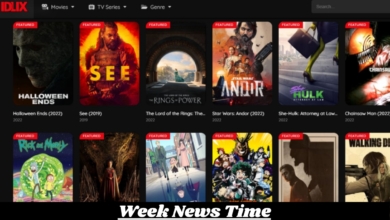Creative Ways to Use Wakelet 1 for Personal and Professional Growth

Table of Contents
The Art of Resilience: How Creativity Thrives Amidst Adversity
In the face of adversity, human creativity has a remarkable ability to flourish. The resilience of artists and their work is a testament to the enduring power of the human spirit Wakelet From historical moments of crisis to personal challenges, art has always been a beacon of hope, expression, and transformation.
Historical Examples of Artistic Resilience Wakelet
Throughout history, periods of turmoil have often given rise to profound artistic movements. For instance, the Renaissance emerged from the shadows of the Black Death, showcasing a renewed interest in human potential and beauty. Similarly, the harrowing experiences of World War I and II inspired works of literature, visual art, and music that captured the complexities of human emotion and the quest for meaning amidst chaos.
Personal Adversity and Artistic Expression
Wakelet On a personal level, many artists have turned their struggles into sources of inspiration. Vincent van Gogh, despite his battles with mental illness, created some of the most iconic paintings in art history. Frida Kahlo, through her physical pain and personal heartbreak, produced deeply emotive and symbolic works that continue to resonate with audiences worldwide.Wakelet
Modern-Day Challenges and Creative Responses
In contemporary times, artists are responding to global challenges such as the COVID-19 pandemic, climate change, and social justice issues. Digital platforms have become vital spaces Wakelet for artistic expression, allowing creators to connect with global audiences and foster communities of support. Street art and public installations also serve as powerful tools for raising awareness and inspiring collective action.
The Therapeutic Power of Art

Art therapy has gained recognition as a valuable method for coping with trauma and stress. Creating art allows individuals to process emotions, gain insights, and find a sense of control. This therapeutic aspect underscores the essential role of art in promoting mental well-being and resilience Wakelet
Conclusion: The Indomitable Spirit of Art
The resilience of art in the face of adversity highlights its indispensable role in human life. Whether reflecting societal upheavals or personal battles, art remains a vital means of expression and healing. As we navigate the uncertainties of the future, the creative spirit will undoubtedly continue to shine, reminding us of our shared humanity and our capacity to overcome.
Art, in all its forms, endures as a powerful testament to human resilience, transforming pain into beauty and adversity into strength.
The Digital Renaissance: How Technology is Transforming the Art World
In recent years, the art world has experienced a profound transformation driven by advancements in technology. This digital renaissance is redefining how art is created, shared, and experienced, opening up new possibilities for artists and audiences alike.
The Evolution of Digital Art
Digital art, once a niche genre, has now become a significant force within the art community. Tools such as digital painting software, 3D modeling programs, and virtual reality (VR) platforms have enabled artists to explore new dimensions of creativity. Programs like Adobe Photoshop and Procreate have become staples for digital illustrators, while VR tools like Tilt Brush allow artists to paint in three-dimensional space, offering an immersive creative experience Wakelet
The Rise of NFTs and Blockchain Technology
Non-fungible tokens (NFTs) have revolutionized the way digital art is bought, sold, and owned. By leveraging blockchain technology, NFTs provide a way to authenticate and monetize digital works, ensuring that artists can retain ownership and profit from their creations. This innovation has democratized the art market, allowing artists to reach global audiences directly without the need for traditional intermediaries such as galleries and auction houses Wakelet
Social Media and Online Platforms
Social media platforms like Instagram, TikTok, and Twitter have become essential tools for artists to showcase their work, build their brand, and connect with fans Wakelet Online galleries and marketplaces like Etsy, Saatchi Art, and DeviantArt provide additional venues for artists to sell their work and gain exposure. These platforms have leveled the playing field, giving emerging artists the opportunity to gain recognition and success.
Virtual Exhibitions and Augmented Reality
The COVID-19 pandemic accelerated the adoption of virtual exhibitions, allowing galleries and museums to reach audiences during lockdowns. Virtual tours and online galleries have made art more accessible, enabling people to explore collections from the comfort of their homes. Augmented reality (AR) is also enhancing the art viewing experience, allowing users to see digital artworks superimposed in their physical space through their smartphones or AR glasses.
Collaborative and Interactive Art
Technology has also fostered new forms of collaborative and interactive art. Online platforms and software enable artists to work together in real time, regardless of their geographical location. Interactive installations and digital performances engage audiences in participatory experiences, blurring the lines between artist and viewer.
Challenges and Considerations
While the digital transformation of the art world offers exciting opportunities, it also presents challenges. Issues of digital preservation, the environmental impact of blockchain technology, and the digital divide are important considerations that need to be addressed. Ensuring equitable access to these new tools and platforms is crucial for fostering a diverse and inclusive art community.
Conclusion: Embracing the Future of Art
The digital renaissance is reshaping the landscape of the art world, offering unprecedented opportunities for innovation and expression. As technology continues to evolve, so too will the ways in which we create, share, and experience art. Embracing these changes will allow artists and audiences to explore new frontiers, ensuring that the creative spirit thrives in the digital age.



